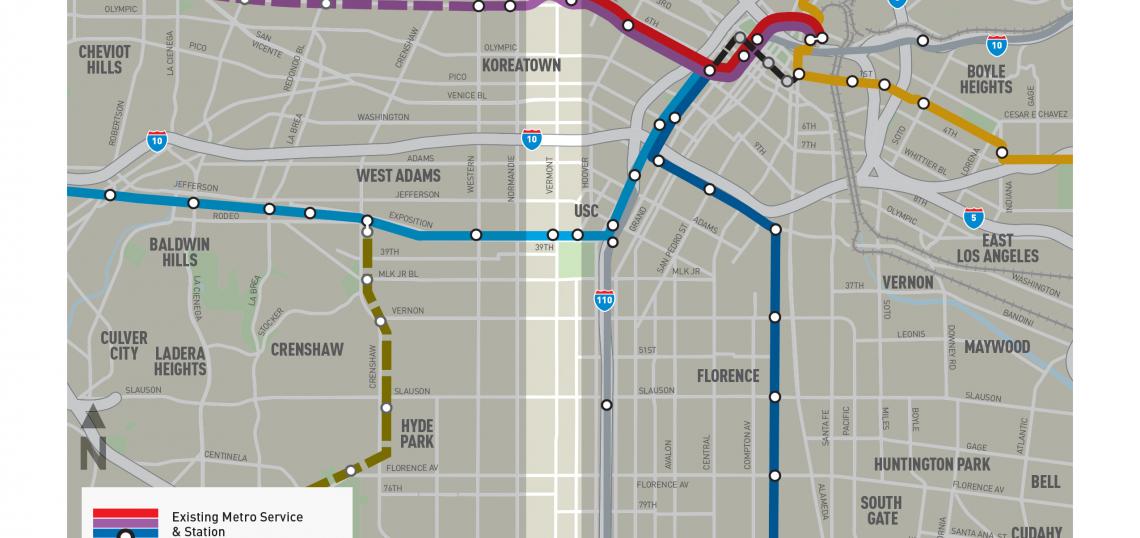In a series of meetings over the next week, Metro will offer the public an update on the proposed Vermont Transit Corridor Project, which calls for building a north-south bus rapid transit (BRT) line that would run between Hollywood Boulevard in Los Feliz and 120th Street in the unincorporated community of Athens.
The project, according to Metro, has $425 million in funding from sources including Measure M, and is anticipated to be built between 2024 and 2028.
But buried at the end of the presentation is something perhaps more tantalizing to Los Angeles transit enthusiasts: an early look at a future conversion of the unbuilt BRT line to rail. This comes with the caveat that any conversion would have to wait until the far-off year of 2067, as currently available funds would not cover the costs of a rail line in the near-term future.
There are six initial rail concepts under consideration, including side- and center-running light rail, a side-running tram, and three options for a heavy rail subway along the corridor.
A curb-running tram or light rail system would operate at-grade along between Wilshire Boulevard and 120th Street, similar to an alternative under consideration for the East San Fernando Valley Transit Corridor.
A center-running light rail line could run at-grade on the wide median located south of Gage Avenue, although the northern stretch toward Wilshire would require at least some grade separation - particularly at Vermont's crossing with the Expo Line.
Metro lists three alternatives for a heavy rail line along the corridor, including rerouting either the Red or Purple Line to continue south along Vermont at the shared Wilshire/Vermont Station. The third heavy rail alternative imagines an independent new rail line that would terminate in a separate station box adjacent to the existing Wilshire/Vermont stop.
Moving forward, Metro hopes to narrow its focus to three rail concepts for additional analysis. The criteria for evaluation will include customer experience, system connectivity, operability and reliability, passenger capacity, cost, and potential construction impacts and service disruption.
Both the rail and bus rapid transit alternatives are expected to be refined for additional study by the end of May, with the findings scheduled to be revealed in October, and the complete study due by December. By mid-2019, a full environmental review of the bus rapid transit project is expected to begin.
- A Look at the Proposed Vermont BRT Line (Urbanize LA)






